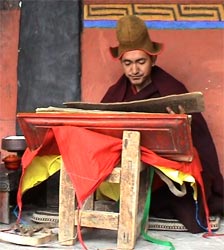Traditional knowledge
Traditional knowledge refers to the knowledge, innovations, and practices of indigenous and local communities around the world. Developed from experience gained over the centuries and adapted to the local culture and environment, traditional knowledge is transmitted orally from generation to generation. It plays a vital role in health care, food security, environmental management, and cultural preservation.
Definition and Scope[edit | edit source]
Traditional knowledge encompasses a broad range of knowledge systems existing within a community, often forming the basis for local-level decision-making in agriculture, health care, food preparation, education, natural-resource management, and a host of other activities in rural communities. This knowledge is integral to a cultural complex that also includes language, systems of classification, resource use practices, social interactions, ritual and spirituality.
Types of Traditional Knowledge[edit | edit source]
Traditional knowledge can be classified into several types, including:
- Ethnobotany: The study of how people of a particular culture and region make use of indigenous (native) plants.
- Ethnomedicine: The study of traditional medical practices, which may include the use of herbal medicines, spiritual therapies, and manual techniques.
- Traditional Ecological Knowledge (TEK): Knowledge about the environment, including plants, animals, natural phenomena, and the relationships between them, which is used for decision-making in areas such as hunting, fishing, and natural resource management.
- Indigenous Knowledge Systems: Encompasses the complex set of knowledge, skills, and philosophies developed by societies with long histories of interaction with their natural surroundings.
Protection and Intellectual Property Rights[edit | edit source]
The protection of traditional knowledge is a subject of intense debate and discussion at the international level. Issues arise in the context of intellectual property rights (IPR) as traditional knowledge often does not fit well within the frameworks of the modern IPR system, which is based on notions of individualism and exclusivity. Various international bodies, including the World Intellectual Property Organization (WIPO) and the Convention on Biological Diversity (CBD), are working towards better protection mechanisms for traditional knowledge that respect both the knowledge itself and the rights of the indigenous and local communities who hold it.
Challenges and Threats[edit | edit source]
Traditional knowledge faces threats from several fronts, including biopiracy, where corporations patent traditional knowledge without compensatory arrangements with the indigenous communities; loss of biodiversity; and the erosion of cultural identity due to globalization and modernization. Efforts to preserve traditional knowledge are crucial for maintaining biodiversity, cultural diversity, and sustainable development.
Preservation and Transmission[edit | edit source]
Preserving traditional knowledge involves both documenting knowledge and ensuring its transmission to future generations. This can be challenging due to the oral nature of transmission and the rapid pace of change in many communities. Initiatives to preserve traditional knowledge include community-based projects, digital storytelling, and incorporating traditional knowledge into formal education systems.
Conclusion[edit | edit source]
Traditional knowledge is an invaluable asset that contributes to sustainable development, environmental conservation, and the preservation of cultural identity. Recognizing, respecting, and integrating traditional knowledge into global solutions is essential for addressing many of the challenges facing the world today.
Search WikiMD
Ad.Tired of being Overweight? Try W8MD's physician weight loss program.
Semaglutide (Ozempic / Wegovy and Tirzepatide (Mounjaro / Zepbound) available.
Advertise on WikiMD
|
WikiMD's Wellness Encyclopedia |
| Let Food Be Thy Medicine Medicine Thy Food - Hippocrates |
Translate this page: - East Asian
中文,
日本,
한국어,
South Asian
हिन्दी,
தமிழ்,
తెలుగు,
Urdu,
ಕನ್ನಡ,
Southeast Asian
Indonesian,
Vietnamese,
Thai,
မြန်မာဘာသာ,
বাংলা
European
español,
Deutsch,
français,
Greek,
português do Brasil,
polski,
română,
русский,
Nederlands,
norsk,
svenska,
suomi,
Italian
Middle Eastern & African
عربى,
Turkish,
Persian,
Hebrew,
Afrikaans,
isiZulu,
Kiswahili,
Other
Bulgarian,
Hungarian,
Czech,
Swedish,
മലയാളം,
मराठी,
ਪੰਜਾਬੀ,
ગુજરાતી,
Portuguese,
Ukrainian
Medical Disclaimer: WikiMD is not a substitute for professional medical advice. The information on WikiMD is provided as an information resource only, may be incorrect, outdated or misleading, and is not to be used or relied on for any diagnostic or treatment purposes. Please consult your health care provider before making any healthcare decisions or for guidance about a specific medical condition. WikiMD expressly disclaims responsibility, and shall have no liability, for any damages, loss, injury, or liability whatsoever suffered as a result of your reliance on the information contained in this site. By visiting this site you agree to the foregoing terms and conditions, which may from time to time be changed or supplemented by WikiMD. If you do not agree to the foregoing terms and conditions, you should not enter or use this site. See full disclaimer.
Credits:Most images are courtesy of Wikimedia commons, and templates, categories Wikipedia, licensed under CC BY SA or similar.
Contributors: Prab R. Tumpati, MD




